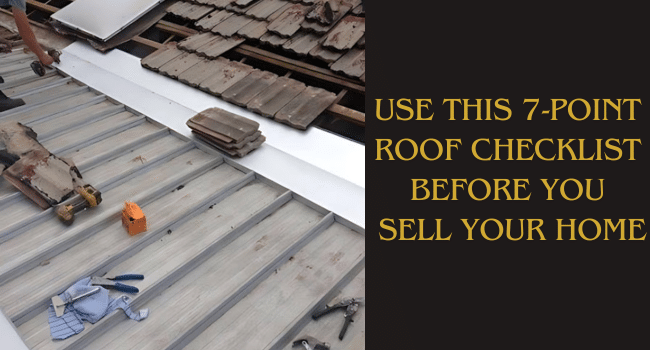Table of Contents
Has the time come to sell your house? Potential buyers are likely to check many things before they make a purchasing decision, and your home’s roof is one of the most important. The value of your home and the final amount you can sell it for greatly depend on the condition of your roof.
Here’s a 7-point checklist you can conduct on your roof today, and if you find any compromises, consider contacting a roof restoration Melbourne expert so that you can rectify any problems. Your roof will determine many aspects of your potential buyers’ quality of life, so pay attention to the following important points.
Leaks Within the Interior of Your Home
A leak inside any of your house’s rooms is a sure sign that something isn’t right with your roof’s exterior. If rainy weather causes any dripping from your ceiling, this means that the waterproofing of your roof has been compromised and needs repair.
You may also notice dripping on the side of your walls, so inspect your home carefully before you put it up for sale. Dripping on the side of a roof indicates that either the cornice of your ceiling or the exterior of your roof is allowing water in through cracks, or water that is pooling somewhere.
Broken Roof Tiles
Speaking of cracks, be sure to check each of the roof tiles on your roof to see if any of them are cracks or broken. You may also find that one or two tiles are completely missing, which is not uncommon with roofs that are older than 30 years.
When inspecting your roof tiles, please remember to exercise extreme caution. Use a sturdy ladder that won’t slide while you’re climbing. Also check the wings of your ladder to make sure none of them have deteriorated or come loose. Once you’re confident that your ladder is safe, climb up and begin your inspection.
Flush Surfaces Inside and Out
Both your roof and your ceiling should always be completely flush. Any sign that this is not the case may indicate that water has caused swelling (inside), or deterioration has resulted in bulging (outside). This is especially true if your home has a flat roof, which has become more common over the past 40 years.
Flat roofs require a lot of waterproofing, because water will easily pool and cause eventual leaking. Check for bulges, cracks, or any thin layers of bitumen (tar) that may need a reapplication. When checking your ceiling, look out for sagging or cracks. If necessary, climb inside your ceiling to make sure that there isn’t any water collected within.
Blocked Gutters
While your ladder is up, you may as well also check your gutters to make sure none of them are blocked. Grab a jug of water and use it to test whether your gutters are allowing water to run through without trickling.
If you do notice a build up of debris, take a brush and sweep the roof valley channels until you can collect as much of it as possible. Keep testing with water and make sure you go around your entire roof to make sure there’s no blockage.
Rusted Areas
Any section within your roof that is made from metal may succumb to rust over time. Gutters, roof valleys, and stabilising beams could wear away if they haven’t been properly rust-proofed regularly. Giving your metal components an extra coat of rust resistant paint isn’t a difficult process, so consider giving them a once-over if you feel it’s necessary.
An Inspection of Your Roof Flashing
Roof flashing is an important system of every roof, because it guides water towards the roof valleys and gutters so that it doesn’t accumulate on the roof itself. Check all of these areas to make sure they aren’t rusted or broken. If there’s a break at any point of your roof flashing, water may find its way to stagnant areas where it can pool and eventually seep through to your ceiling interior.
Roof Vents and Ceiling Beams
At this point you may feel as if you’ve thoroughly checked every possible part of your roof. But one aspect many homeowners forget about is the roof vents. Vents prevent mould from forming within your ceiling due to moisture. It only takes one drop of water to cause mould, so having proper ventilation is super important. Vents that are blocked or rusted may indicate a need for replacements, depending on the severity of their damage.
While you’re in your ceiling, you should also check if mould has already occurred on the beams of your roof. Grab a torch and do a general inspection of your beams. Look out for blue, white, or green dicolouration. If you do find mould, double check your ventilation and consider sanding your beams.
Final Thoughts
If all these checks seem a bit cumbersome to you, remember that these inspection points are standard practice for all roof experts when they check your house roof. Consider calling a Melbourne roof professional to do these for you, as they will also be able to advise you on solutions if any of your roof components have been compromised.
